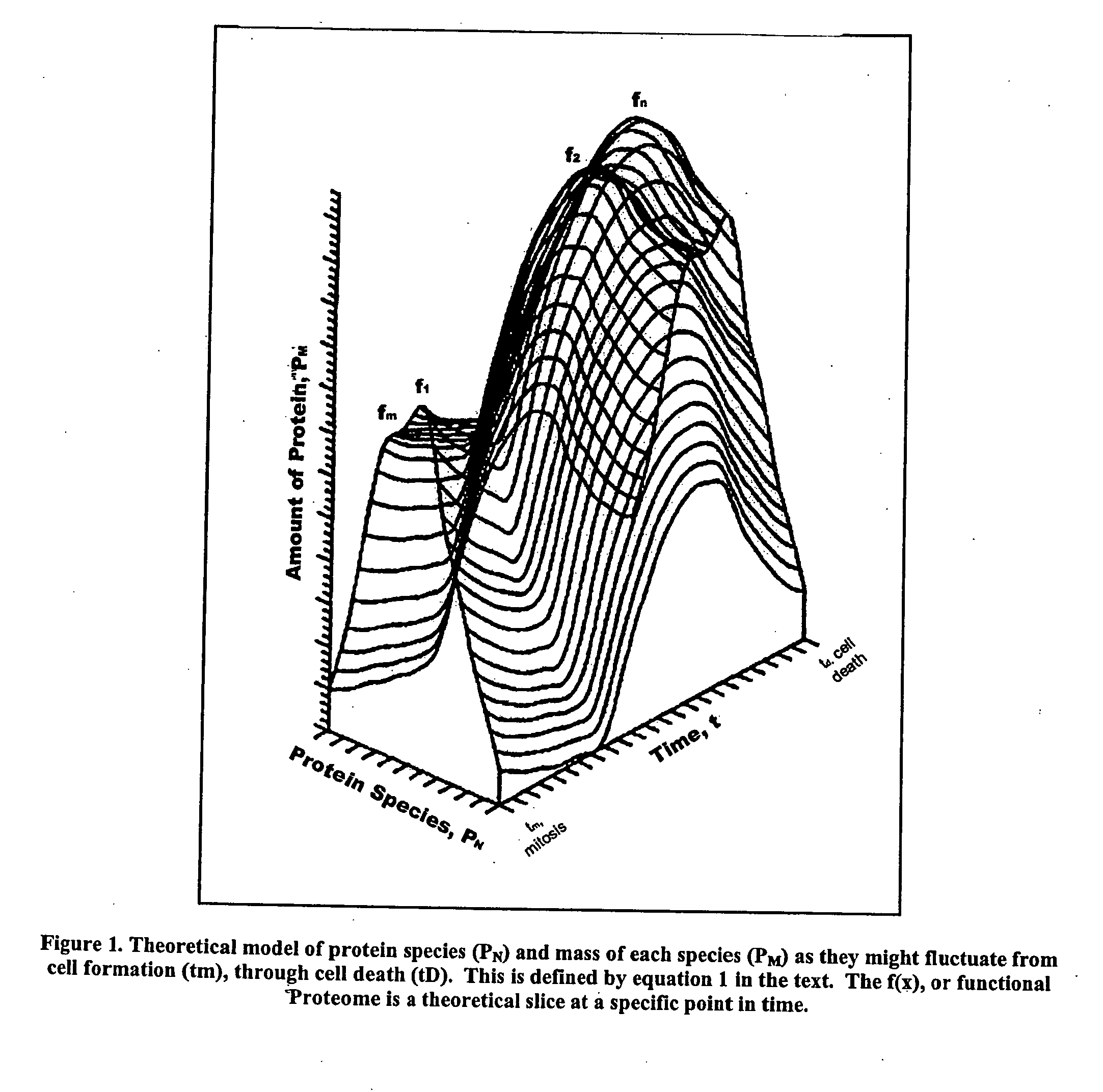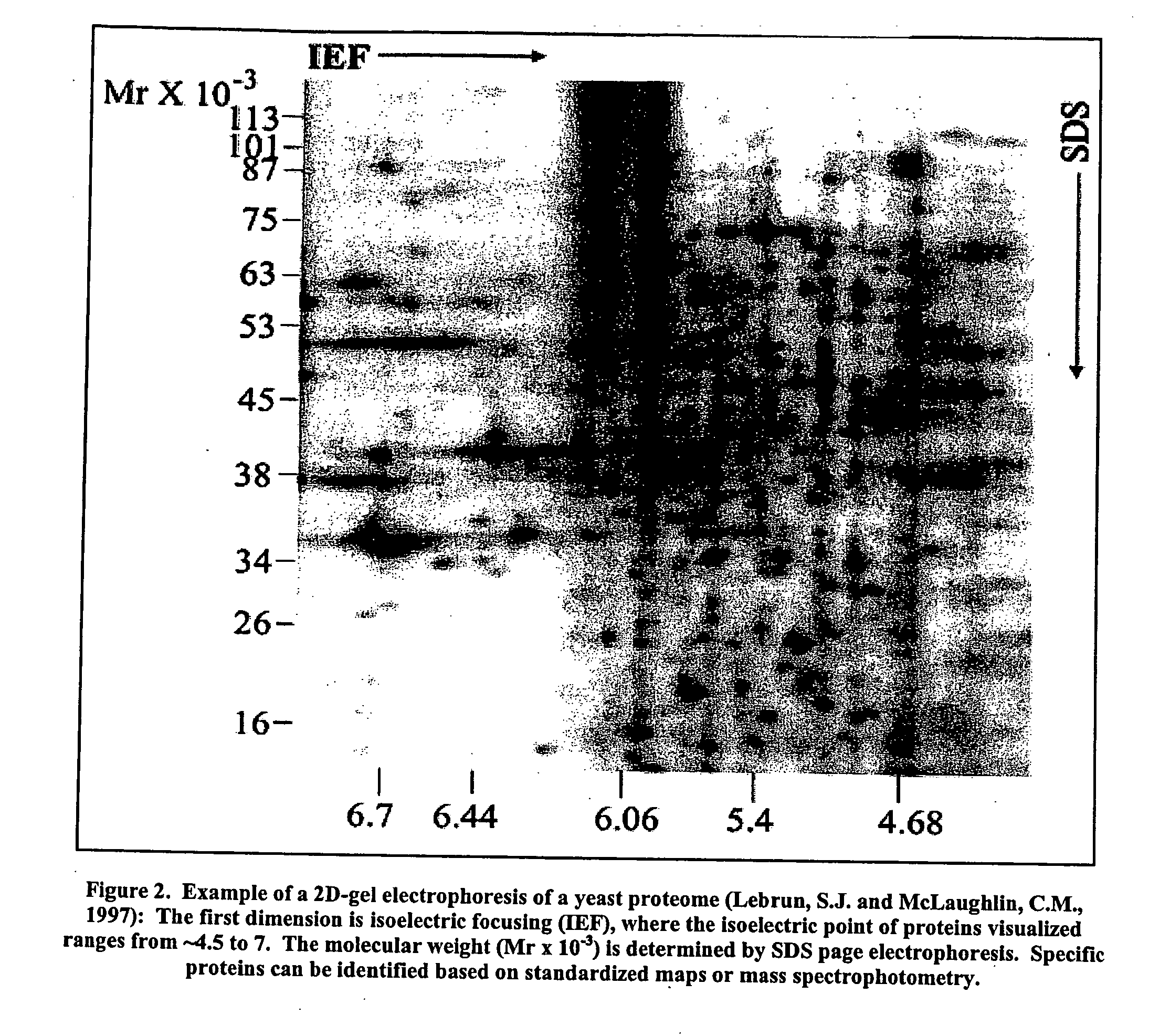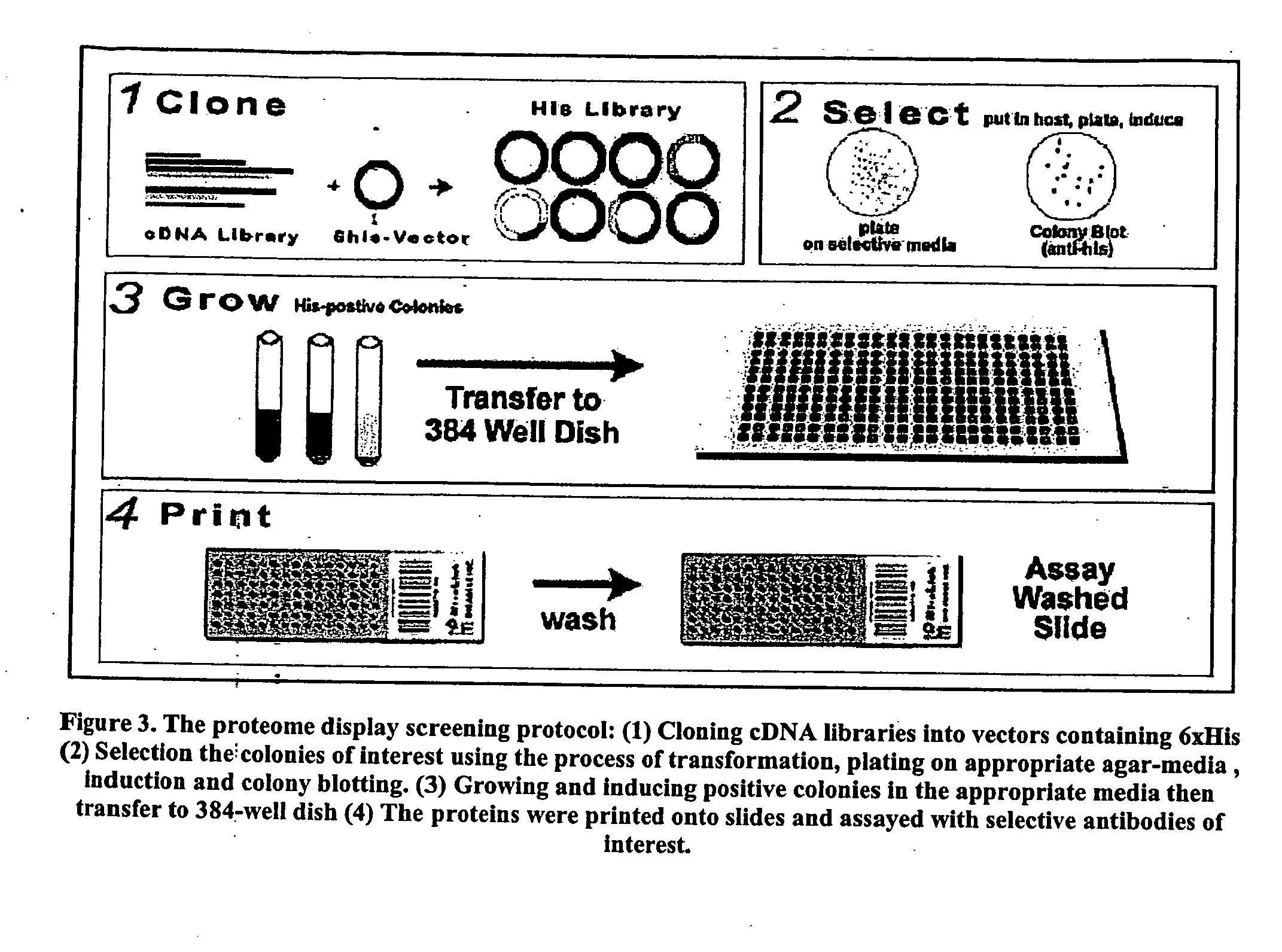High throughput screening method
a screening method and high throughput technology, applied in the field of improved microarray technology of expressed proteins, can solve the problems of difficult purification of individual proteins, prohibitive yield and expense of these methods for many research laboratories
- Summary
- Abstract
- Description
- Claims
- Application Information
AI Technical Summary
Problems solved by technology
Method used
Image
Examples
example 1
General Procedures
Bonding of PVDF to Substrate
PVDF was bonded to a solid substrate by the following steps: a) apply silicon, glue or double sided tape to solid substrate in even thin layer, b) under clean conditions, place sheet on lab bench and apply solid substrate (glue side facing PVDF sheet) to vinyl fluoride sheet, and c) press firmly and allow drying. Using an sharp instrument, e.g., a razor blade, exacto knife, etc., cut sheet so that it is size of solid substrate. The resulting PVDF bonded to a solid substrate is referred to herein as a chip, a slide and / or Zeta-Grip™ chip membrane.
The chips should be inspected before use. Use powder free nitrile gloves when handling the chips so as not to introduce dust. Place the chip on top of a bright light. Defective chips contain bubbles or defects.
Hand Spotting
All samples to be spotted were kept on ice until needed. Samples were pipetted onto the Zeta-Grip™ chip membrane (1 μl), making sure to not press the pipette tip dow...
example 2
Experiments have been conducted using a Ni2+ substrate. FIG. 8 shows and example of this data.
There are a number of positive reactions for the RA patient pool at 1:500. There are also some corresponding positive reactions for control at 1:500. Several of these samples were traced back to clones. The clones were grown and used for plasmid prep and sequencing. From this early run, one of the positives that was present in RA but not control was a sequence with significant homology to the large subunit of the mitochondrial ribosome, L35. FIG. 9 shows raw data and quantified data for this potential RA marker.
FIG. 9a shows that a repeat assay of protein derived from this clone is positive for the anti-His. This indicates that it is likely to be expressed in the vector. The clone is also positive for the RA and negative for the control. FIG. 9b shows quantification of this, and the clear lack of signal in the control.
example 3
The next set of experiments described here utilized a leader sequence, and ζ-grip™ substrate. FIG. 10 shows a number of clones and the reactivity to pools of either RA patient serum, or control patient serum.
Four of the five RA recombinant proteins with significant predictive value had significant homology to mitochondrial proteins. However, these proteins, within the limits of our sequencing, appeared to have mutations and translocations. FIG. 11 shows the predictive value for five of these clones when assayed using individual serums.
Two different clones with significant homology to NADH dehydrogenase were found to have significant predictive value. It is interesting to note that the other dehydrogenase involved in mitochondrial energy production, pyruvate dehydrogenase has been previously identified as a disease marker for a number of rheumatic diseases, including RA [30]. Three of the potential disease markers had homologies to proteins involved in mitochondrial protein synt...
PUM
| Property | Measurement | Unit |
|---|---|---|
| temperature | aaaaa | aaaaa |
| thickness | aaaaa | aaaaa |
| thickness | aaaaa | aaaaa |
Abstract
Description
Claims
Application Information
 Login to View More
Login to View More - R&D
- Intellectual Property
- Life Sciences
- Materials
- Tech Scout
- Unparalleled Data Quality
- Higher Quality Content
- 60% Fewer Hallucinations
Browse by: Latest US Patents, China's latest patents, Technical Efficacy Thesaurus, Application Domain, Technology Topic, Popular Technical Reports.
© 2025 PatSnap. All rights reserved.Legal|Privacy policy|Modern Slavery Act Transparency Statement|Sitemap|About US| Contact US: help@patsnap.com



